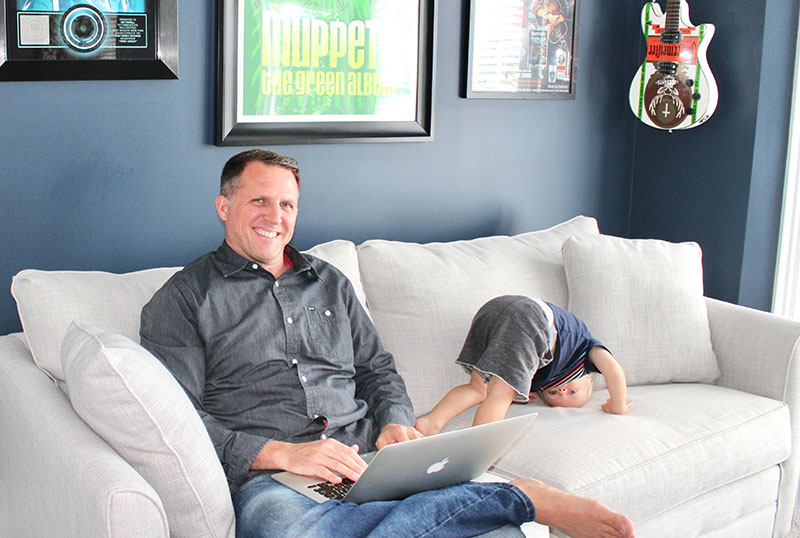#WFH Diaries: Ray Powell of Stir, Brands + Entertainment
As the pandemic continues with no end in sight, and with most folks still working from home, we’re checking in with industry pros to see how they’re faring. Here’s an update from Ray Powell, CEO of Stir, Brands + Entertainment.
Give us a one-line bio of yourself.
Founder and CEO or Stir, Brands + Entertainment, a consultancy dedicated to generating ad revenue for digital publishers and content creators.
Where are you living right now, and who’s with you?
I live in Nashville with my wife Megan and two kids, Eloise (4) and Deacon (2). We’re recent transplants from Los Angeles, having moved about a year and a half ago.
What’s your work situation like at the moment, and how is it evolving?
I’m working out of a dedicated home office. When I first started Stir, we were living in L.A., my first child had just been born and No. 2 was on the way. I was working out of an office full-time at that point. When we decided to move to Nashville, it was important to find a home with a good home-office space, as I wanted split my time between an office and home in order to spend more time with my kids. I was lucky enough to be fully set up with a functional home office by the time Covid hit, making the transition a little less painful.
Stir was originally set up as a remote work company with team members located all around the country. I’ve gotten so accustomed to working from home now, I don’t think I’ll be going back to a traditional office any time soon.
Describe your socializing strategy.
Telling knock-knock jokes to my 4-year-old. It’s tough to get out much with two little ones in the house, by my wife and I manage to make it out together at least once a week. Otherwise I keep up with friends and family over Zoom and phone.
How are you dealing with childcare?
My amazing wife is full time with the kids, which frankly is a much harder job than mine.
What are you reading?
Bob Iger’s The Ride of a Lifetime.
What are you watching?
Lots of YouTube and TikTok videos. It usually starts for work purposes, but the algorithms have me so figured out that I get completely sucked in.
What are you listening to?
Podcasts. I’m currently focused on finance and investment, and science-y health and longevity podcasts.
How are you staying fit?
I’m running a lot more now than I ever have in my life, which is something I have historically hated. Even though the gyms have started to open back up in my area, I’m continuing on with the home-based routine that I started at the beginning of quarantine.
Have you taken up a hobby?
I’ve started revisiting old hobbies, namely flying. I got my pilot’s license a number of years back, but flying really took a back seat when my kids were born, and once I started Stir, there there were no more free moments. I’ve started carving out a little time to get back into flying lately, and I love it. There’s no better way to practice social distancing than being 3,000 feet above everyone else!
An awkward moment since all this started.
I had an intro call on Zoom with someone I had just met at the beginning of the lockdown. About halfway through our video conversation, I notice the door behind her open, then a lady crawl across her floor. The person I was speaking to didn’t seem to notice and kept talking. Meanwhile, the woman on the floor continued across the room, grabbed something at the other end of the room, and then crawled back through the door, and closed it behind her. It was apparently her partner, who didn’t seem to think the camera would see her!
An aha! moment since all this started.
Realizing what I had suspected all along, which is that we don’t all need to be in the same place at the same time to run productive businesses and teams.
What’s your theory on how this is going to play out?
I think we’re going to see a lot of semi-permanent to permanent WFH situations. A lot of employers are finding that allowing people to WFH does not kill productivity, and in fact generates significant cost savings. I suspect there is going to be a large migration away from expensive cities like New York, L.A. and San Francisco to smaller and mid-sized cities that offer a lower cost of living to those who have the ability to work remotely.



 Events
Events
